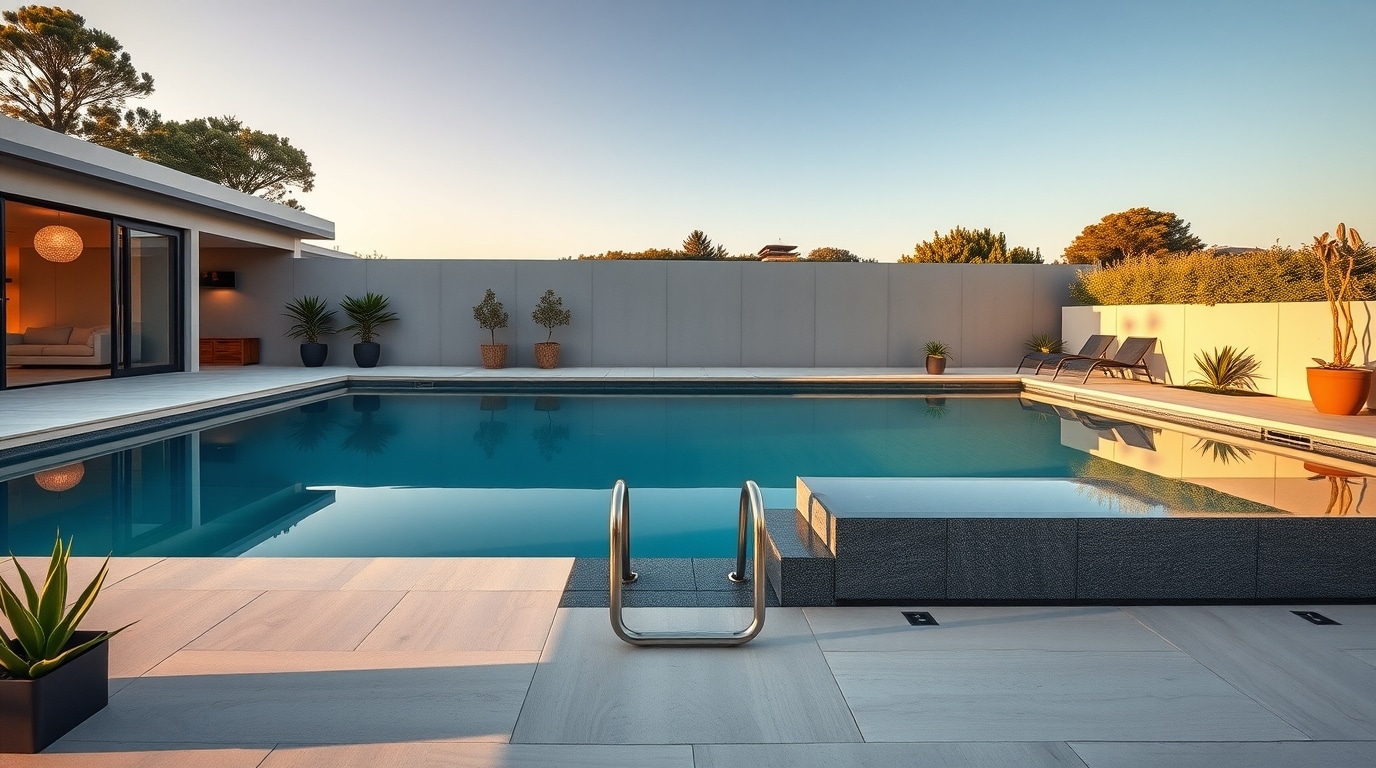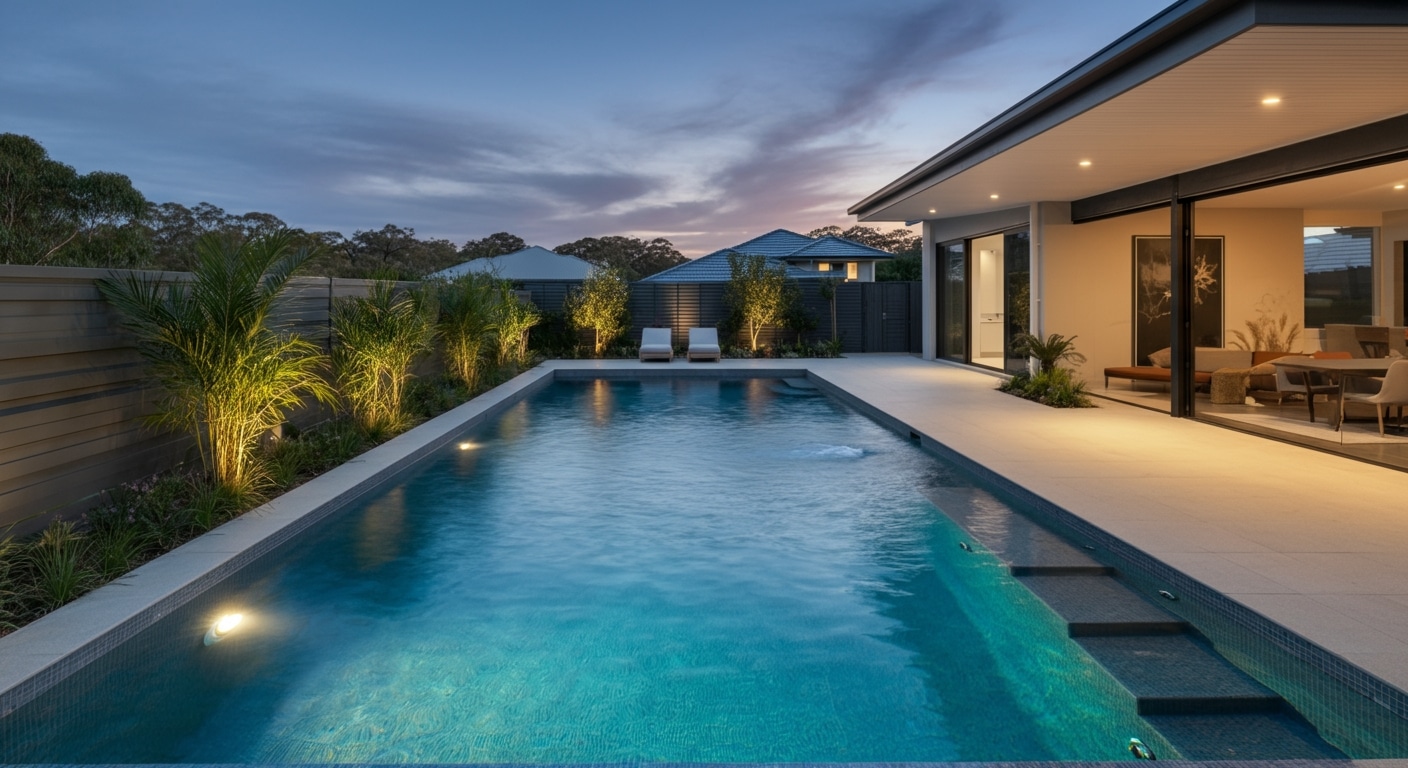In Melbourne, every suburb falls under the jurisdiction of a specific council, each with its own set of rules, timelines, and approval requirements for pool construction. Understanding which permits apply to your location can speed up your project — or save you from a costly rejection.
This page breaks down what is really required by the main councils across Melbourne — including Boroondara Council areas like Kew, Camberwell, and Hawthorn — going beyond what’s listed on official portals.
What Permits Are Typically Required for Pool Construction?
Most pool projects in Melbourne require a core set of permits and certifications, though specifics can vary depending on your suburb.
Building permit (mandatory statewide)
A building permit is required for all pool constructions across Victoria. This ensures the design aligns with the overarching pool construction regulations in Melbourne, which cover all structural, safety, and technical standards set by state law. It must be issued before any site works begin.
Planning permit (only in some council zones)
A planning permit is not always required, but certain zones — such as heritage overlays, corner lots, or flood-prone areas — trigger this additional approval. Councils assess the pool’s impact on the streetscape, environment, and neighbouring properties.
Pool barrier compliance certificate
All new pools must comply with strict fencing and barrier standards. A compliance certificate is mandatory before the pool can be filled with water, ensuring safety measures meet Victorian regulations.
Do You Always Need a Planning Permit?
In Melbourne, a planning permit is not automatically required for all pool projects. Many residential zones allow pool construction under standard building permit rules without additional planning approval.
However, certain site-specific factors can trigger the need for a planning permit. These include properties on corner lots, sites within heritage overlays, flood-prone areas, or zones covered by strict neighbourhood character controls. In these cases, councils assess how the pool may affect the surrounding environment, visual impact, and drainage patterns.
Understanding when a planning permit applies is key to avoiding unnecessary delays or rework. For official details by municipality, see VIC Gov Planning – Planning Schemes by Municipality.
Variations by Council: What to Expect in Key Suburbs
Each Melbourne council applies unique requirements to pool projects, making it essential to understand local rules before you begin

Stonnington: design overlays and permit sequencing
In Stonnington, many properties fall under design or neighbourhood character overlays. Planning permits are often required alongside building permits, and councils expect clear sequencing of applications to avoid approval delays.
Bayside: fencing and visibility compliance stricter near coast
Bayside imposes stricter rules for fencing design, especially where pools are visible from coastal reserves or public pathways. Additional conditions may apply to minimise visual impact on the surrounding environment.
Glen Eira: high reactivity to pool drainage layouts
Glen Eira Council is particularly attentive to how pool drainage is managed. Applicants must demonstrate that overflow and backwash water won’t impact neighbours or council stormwater systems.
Yarra Ranges: site slope and vegetation clearance
In Yarra Ranges, natural site slope and vegetation protection measures are key considerations. Extra documentation is often needed to show that earthworks and tree clearances are minimised.
Maribyrnong: heritage overlays and compact blocks
Maribyrnong combines heritage overlays with compact urban lots. This often means dual permit requirements and makes it essential to understand how to install a pool on a narrow block in a way that satisfies the council’s stricter scrutiny of placement and design.
Timeline and Delays: What Impacts Permit Approvals?
Understanding permit timelines is crucial when deciding the best time to build a pool in Melbourne, as several factors can cause delays. Seasonal backlogs at councils and builder congestion can vary by suburb, significantly impacting when your project can actually begin.

Builder backlog and pre-Christmas congestion
As summer approaches, builders and councils experience a surge in applications. The rush to complete outdoor projects before the holidays leads to longer processing times and scheduling challenges. Starting permit applications early in the year can help avoid these seasonal delays.
Council review cycles (e.g. 21 days + RFI)
Most councils follow a standard review period (often 21 days) but can extend timelines by issuing RFIs (Requests for Further Information). These requests pause the review clock until additional details are provided, adding unexpected weeks to the process if documentation isn’t complete from the outset.
Documents You’ll Need (and Mistakes That Slow You Down)
Submitting the right documents upfront is critical to avoid delays in Melbourne’s pool permit process. Councils typically require:
- Detailed site and elevation plans
- Engineering drawings showing structural and drainage solutions
- A declaration from a registered building surveyor
- Soil reports if required by local conditions
- Proposed pool barrier designs meeting compliance standards
Common mistakes that slow approvals include missing documentation, inconsistent drawings, or plans that don’t align with council overlays. Double-checking requirements with your council or a qualified builder can save weeks of back-and-forth.
In Melbourne, securing pool permits is far from a formality. The requirements change between councils, and understanding your local rules is key to avoiding 80% of the most common approval errors.
Success depends on anticipating overlays, preparing thorough documentation, and choosing a builder familiar with your suburb’s specific process. For official planning details by area, see VIC Gov Planning – Planning Schemes by Municipality.
